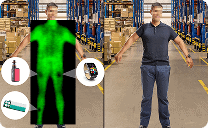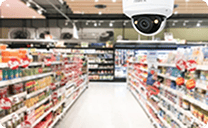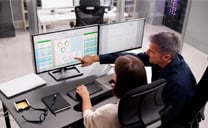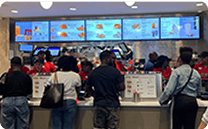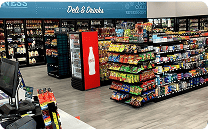In This article
Video analytics can transform traditional surveillance into a proactive, intelligence-driven system. Instead of merely recording footage for future review, video analytics can interpret video data in real time to identify relevant activity, such as motion, object presence, line crossing, loitering, or unusual behavior.
This technology uses algorithms, often powered by artificial intelligence (AI) and machine learning (ML), to process live or recorded video feeds. These algorithms are trained to recognize specific elements within the camera’s field of view and generate alerts or tags when certain conditions are met. Surveillance systems can move from passive observation to automated detection and actionable response for businesses.
Capabilities of Video Analytics
Video analytics can detect a wide variety of spatial and temporal events. Spatial events relate to movement or positioning within a space, such as someone entering a restricted area or a vehicle crossing a perimeter. Temporal events involve timing, such as loitering for an extended period or repeated visits within a short time frame.
Examples of what video analytics can identify include:
- Intrusion into restricted zones after hours.
- Entry count and foot traffic trends.
- Vehicle tracking and license plate recognition.
- Unusual motion patterns or crowd formations.
- Long lines or service delays at checkout counters.
- Dwell time within specific store sections.
The usefulness of video analytics extends beyond security. Businesses use these tools in operational settings to measure performance, improve layout design, verify employee compliance, and evaluate customer behavior.
For instance, a retailer can use people-counting and heat map analytics to understand how customers move through the store, helping refine product placement and staff deployment. A restaurant may monitor line length and dwell time to optimize speed of service. In logistics, analytics can detect inefficiencies in warehouse navigation or unsafe equipment use.
Business Advantages of Video Analytics
Business advantages of video analytics include:
- Real-time alerts for faster response to security threats or operational issues.
- Reduced reliance on manual monitoring, freeing up staff time.
- Increased situational awareness, with systems highlighting relevant activity.
- Objective, data-backed insights that support business decisions.
- Enhanced compliance monitoring, especially when tied to operational checklists or protocols.
Video analytics is most effective when integrated into a broader surveillance and data ecosystem. Linking analytics with point-of-sale systems (POS), access control, and audit platforms adds valuable context to each event. For example, an alert triggered by an unusual transaction can be paired with video footage and transaction data to investigate possible fraud or training gaps.
While powerful, video analytics must be implemented thoughtfully. It’s important to select tools that align with the organization’s goals and clearly define what events or behaviors should trigger an alert. Businesses should also consider privacy policies, data retention practices, and how teams communicate insights.
Video Analytics with DTiQ
VIDEOiQ delivers intelligent video solutions that help businesses move from watching to knowing. The 360iQ platform uses intelligent algorithms to detect key behaviors, automate alerts, and surface the insights that matter most, whether you’re monitoring foot traffic, verifying compliance, or reducing risk. With DATAiQ, your video and data work for you, giving you a clearer view of what’s happening and why. Contact us for more information.
